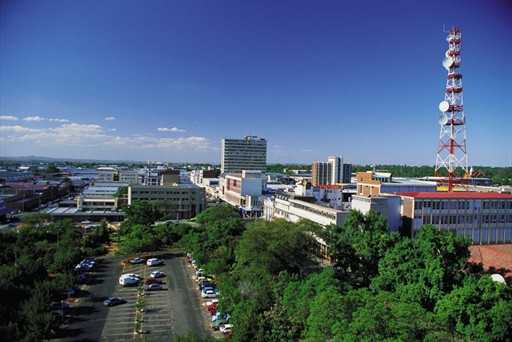Polokwane
Capital of Limpopo, Polokwane is a lively and dynamic metropolis but also an important agricultural center.
Created during the gold rush by the Voortrekkers under the name of Pietersburg, the city was renamed Polokwane, meaning "safe place" in Sotho.
Polokwane is a popular stopover for visitors en route to the Tzaneen area and the northern part of Kruger Park.
Many activities are possible there: the Polokwane Game Reserve, the Sotho village-museum of Bokone Malapa, the art museum, the Irish House turned into a cultural museum, its art galleries, the Polokwane Bird Sanctuary, the Zanna Bird & Reptile Park, Meropa Casino, Golf Club.
Louis Trichardt
Located at the foot of the Soutpansberg mountain range, Louis Trichardt was created by the Voortrekkers and several historical buildings bear witness to its history. Small charming town, it is on the "fruit road" (litchis, bananas, mangoes, nuts) and close to tea and coffee plantations.
Visit the Schoemansdal Museum and the Ben Lavin Nature Reserve.
Tzaneen
Described as an attractive subtropical garden town, Tzaneen is at the foot of the Wolkberg Mountains, north of the Drakensberg Massif. It is famous for its subtropical plantations: avocados, nuts, citrus fruits, mangos, bananas, litchis, coffee, tea and cotton.
Discover its museum filled with artifacts Tsonga and Sotho and its hiking trails in the surrounding reserves.
Bela-Bela
Located in the heart of the Waterberg and surrounded by nature reserves housing the Big 5, Bela-Bela is known for its hot springs with beneficial healing properties, operated in several wellness centers and spa.
The most northerly province of South Africa, it borders Mozambique, Zimbabwe and Botswana. Its name comes from the Limpopo River that runs along its northern border.
Limpopo is a destination rich in wild animals, spectacular landscapes and nature reserves. In addition to safaris and bird watching, the province is the cradle of ancient cultures, such as the Venda culture, steeped in myth and legend.
Advice:
- Makapan's Valley and "The Cave of Hearths" in Mokopane, a UNESCO World Heritage site
- Visit the Rhino Museum in Vaalwater, the only rhinoceros museum in Africa, devoted entirely to the conservation of this endangered animal
- The Magoebaskloof Spring Fair, in September, to visit gardens, discover orchids and wander amidst craft markets
- Mystic Monkeys Feathers Wildlife Park at Rust de Winter, near Bela-Bela
- Adventures with Elephants in Bela-Bela
South Africa, the 'rainbow' nation.
South Africa is so diverse you feel like you are visiting several countries in one trip!
With grandiose and various landscapes (mountains, « bush », beaches, forests, plains, desert), a pleasant climate in all seasons, an abundant and diversified fauna and flora including the “Big Five”, a population with the most composite ethnic groups, South Africa accumulates important natural wealth. Also note among its assets: quality of the hotel sector, services, road network, means of transport, rich and varied gastronomy, excellent wines, favourable exchange rates, 21 national parks and many private reserves, a multitude of activity throughout the country…
When to go?
South Africa has this peculiarity of presenting a wide variety of climates: Mediterranean, subtropical or temperate depending on the region with a high rate of sunshine everywhere (watch out for sunburn!)
South Africa can be visited all year round with more favourable periods depending on interests:
-
June, July and August (South African winter) for animals and therefore preferably the North of the country.
-
September and October: best times for flowers (Namaqualand) but very good for game drives as well.
-
From November to March (South African summer): best time to enjoy the South and East of the country, beaches of the Cape and the Indian Ocean. The Garden Route is particularly appreciated in February: the weather is nice; the temperature of the water is pleasant.
-
April and May: very pleasant autumn with always nice days in Cape Town and the resumption of the animal season.
Formalities:
The passport must include two blank pages and still be valid for 30 days after the expected date of exit from South Africa.
French nationals are exempted from prior visas. A 90-day residence permit will be issued at the border on entry into South African territory.
For other nationalities, inquire on a case-by-case basis with the competent authorities of their country of origin.
For any minor child: a multilingual extract of birth certificate (or an unabridged birth certificate translated into English - certified translation) is required to enter and leave South Africa (in the case of a child traveling with his 2 parents). Please consult the official sites for more information about all the requested documents according to your case.
Health:
No vaccinations are required for entry into South Africa. However, it is advisable to check the updating of your usual reminders and vaccinations as for any country.
Anti-malarial treatment is recommended (see your doctor).
Currency:
The Rand is the official currency of South Africa (symbol: ZAR). Credit cards are accepted everywhere and distributors are easily available for cash withdrawal. Travellers’ checks in euros are also accepted in banks and some hotels.
